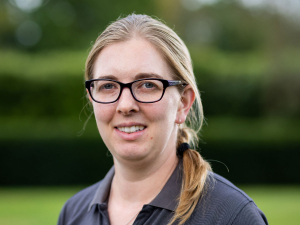Dr Roshean Woods says helping bring the latest tools and technology into dairy farmers’ hands is one of the best things about her role.
The DairyNZ senior scientist, who hails from Timaru, is one of a team of world-leading researchers working in the Low N Systems research programme.
This DairyNZ-led programme is investigating ways to combine different nitrogen (N) mitigation strategies into farm systems in an effort to help farmers achieve significant N loss reduction targets while maintaining farm business viability.
Reducing NZ losses from farm systems can help reduce greenhouse gas emissions and contribute to improved freshwater quality.
Woods’ work, which allows her to follow her passion for the environment, involves partnering with 38 dairy farms in Waikato and Canterbury and collaborating with Fonterra, AgResearch, Lincoln University and EpiVets.
“It’s a collaborative effort,” she says. “We’re getting the best people involved to draw on expertise across many organisations.”
She works closely with DairyNZ farm systems specialist Chris Glassey and says the partnership has helped grow her confidence.
“Chris has a wealth of knowledge and experience, gained throughout his career, and it’s worked really well to have him as a sounding board,” says Woods.
The team’s recent successes include having a paper published in the Journal of New Zealand Grasslands, along with co-authors from Fonterra, Lincoln University, and Waikato University, in November 2023.
This paper identifies grazing management differences between farms with historically low or high bulk milk urea concentrations. These could be linked to reductions in the herd’s dietary NZ surplus on farms with low bulk milk urea, due to cows consuming pasture with a lower protein content.
The researchers are using this data to develop a bulk milk-based indicator tool for farmers to use to monitor and manage their herd’s dietary N surplus. The tool will also help farmers identify when to apply various management mitigations to reduce the risk of excess urinary N losses into the environment.
When she’s not working, Woods enjoys camping, tramping, hunting – for meat and pest control – and gardening.
I might not live on a farm but I enjoy producing my own food. That’s something I’ve learned about myself over the years,” she says. “We recently moved house and the first weekend we were there I was off to the nursery to buy fruit trees.”
Woods’s husband frequently tells her she can’t fit everything in to their 600sq m section, but she’s trying.
“I’ve gone for a fruit salad approach, I love the garden, growing my own vegetables, and I love having flowers and native plants,” she says.
“I’m really passionate about the environment. That’s one of the reasons I do what I do.”



















